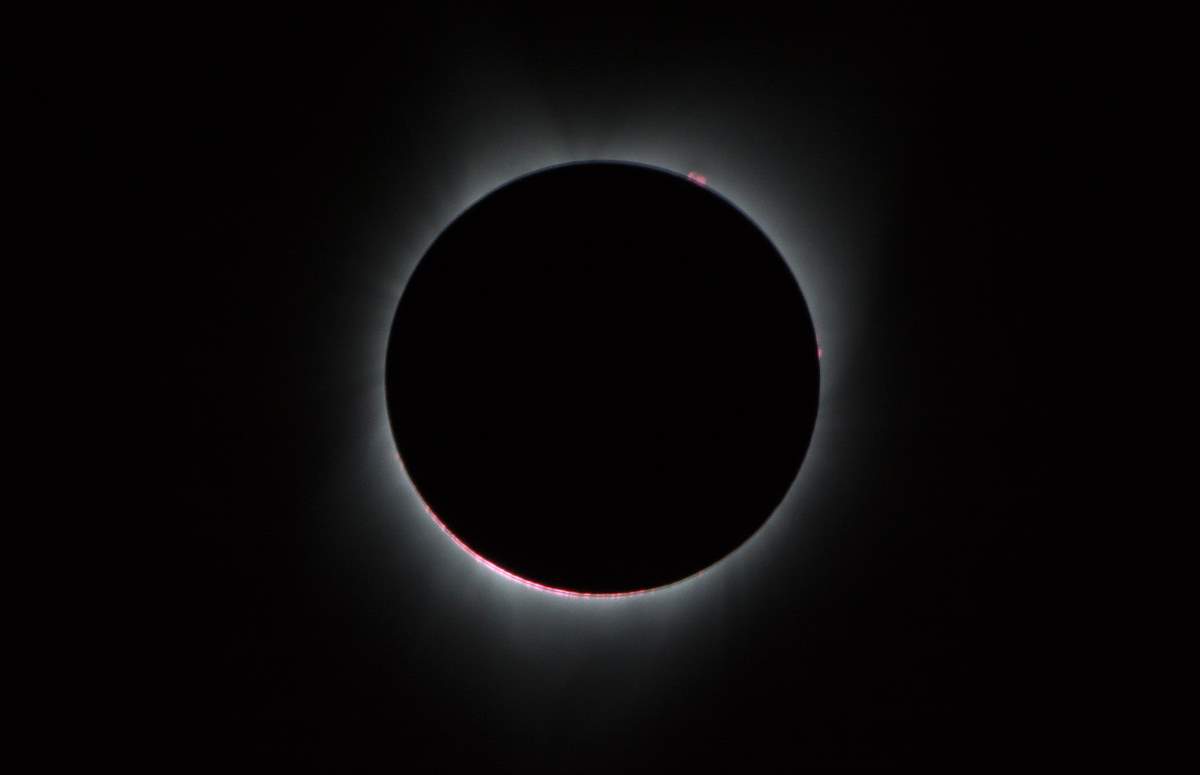Today I learned that there’s a solar eclipse calculator on the NASA website. Its official name is JavaScript Solar Eclipse Explorer (JSEX). Using this solar eclipse calculator, you can compute the local circumstances for every solar eclipse visible from a city for any century from -1499 to 3000 (1500 BCE to 3000 CE).
You can access NASA’s solar eclipse calculator tool by using this link.
Solar Eclipse Calculator
NASA’s solar eclipse calculator, or officially Javascript Solar Eclipse Explorer was developed by Chris O’Byrne and Fred Espenak in 2007. It is based on the 2003 “Eclipse Calculator” by Chris O’Byrne and Stephen McCann.
It is free software, and you can redistribute it and/or modify it under the terms of the GNU General Public License as published by the Free Software Foundation; either version 2 of the License or (at your option) any later version.
The JavaScript Solar Eclipse Explorer (JSEX) is distributed in the hope that it will be useful, but without any warranty. Without even the implied warranty of merchantability or fitness for a particular purpose.
In my experience, it successfully calculated the date of the next Great American Solar Eclipse, which will be occurred on April 8, 2024.

Photo: A total solar eclipse was visible from the Northern tip of Australia on November 13, 2012 at 3:35 EST. The light halo visible around the edges of the moon is the sun’s atmosphere, the corona. Photo credit: Romeo Durscher (NASA)
I used the solar eclipse calculator for my home city and I found out that the next partial solar eclipse will be on October 25, 2022, the next annular solar eclipse will be on June 1, 2030, and the next total solar eclipse will be on September 3, 2081 (oh my…)
What is the differences between a total solar eclipse, an annular solar eclipse, and a total solar eclipse?
Here is a visual explanation below: an annular solar eclipse (left) occurs when the Moon is too far away to completely cover the Sun‘s disk. During a partial solar eclipse (right), the Moon blocks only part of the Sun’s disk.
A total solar eclipse occurs when the disk of the Sun is fully obscured by the Moon.

The next solar eclipse dates for some major cities
P: partial, A: annular, T: total
- Beijing – P: June 01, 2030, A: March 22, 2118, T: September 2, 2035
- Berlin – P: October 25, 2022, A: July 23, 2093, T: October 7, 2135
- Buenos Aires – P: April 30, 2022, A: December 7, 2132, T: January 8, 2103
- Chicago – P: April 8, 2024 (see notes 1), A: July 28, 2614, T: July 17, 2205
- Dallas – P: January 26, 2028, A: September 5, 2165, T: April 8, 2024 (see notes 1, 3).
- London – P: October 25, 2022, A: February 5, 2437, T: May 5, 2600
- Los Angeles – P: April 8, 2024 (see notes 1), A: July 14, 2121, T: – (see notes 2)
- Madrid – P: March 29, 2025, A: August 16, 2175, T: May 5, 2599
- Moscow – October 25, 2022, A: July 13, 2075, T: October 16, 2126
- Melbourne – April 20, 2023, A: February 11, 2548, T: April 4, 2220
- New York – P: April 8, 2024 (see notes 1), A: March 26, 2267, T: May 1, 2079
- Paris – P: October 25, 2022, A: January 27, 2446, T: September 3, 2081
- Rome – P: October 25, 2022, A: September 27, 2220, T: July 6, 2187
- Tokyo – June 01, 2030, A: April 8, 2312, T: August 12, 2762
- Toronto – P: April 8, 2024 (see notes 1), A: July 1, 2057, T: October 26, 2144
- São Paulo – October 14, 2023, A: May 27, 2207, T: November 7, 2906
- Sydney – April 20, 2023, A: April 11, 2089, T: July 22, 2028
Notes
- The next Great North American Eclipse (Total Solar Eclipse) will be on April 8, 2024. It will be a partial eclipse for cities like Chicago, Los Angeles, or New York. But, in Dallas, for example, the event will occur as a total solar eclipse.
- There will be no total solar eclipse in Los Angeles until the year 3000.
- After the Grat North American Total Solar Eclipse 2024, the next total solar eclipse will be on June 30, 2345 in Dallas.
Sources
- Solar Eclipse Calculator (JavaScript Solar Eclipse Explorer, JSEX) on the NASA website
- Solar eclipse on Wikipedia
- Moon Landings: All-Time List [1966-2025] - February 2, 2025
- What Is Max-Q and Why Is It Important During Rocket Launches? - January 16, 2025
- Top 10 Tallest Rockets Ever Launched [2025 Update] - January 16, 2025


